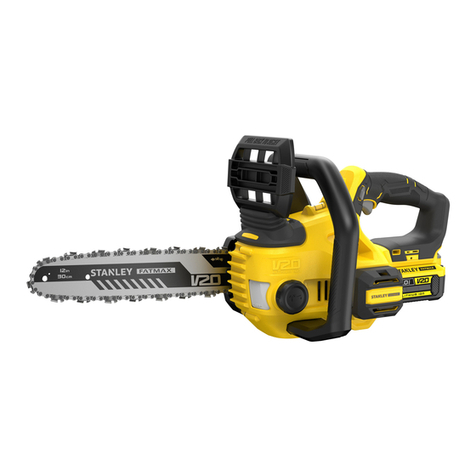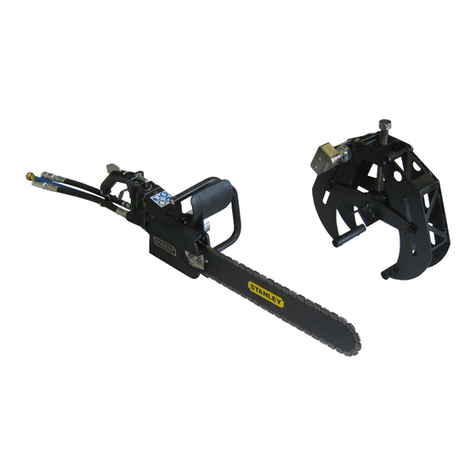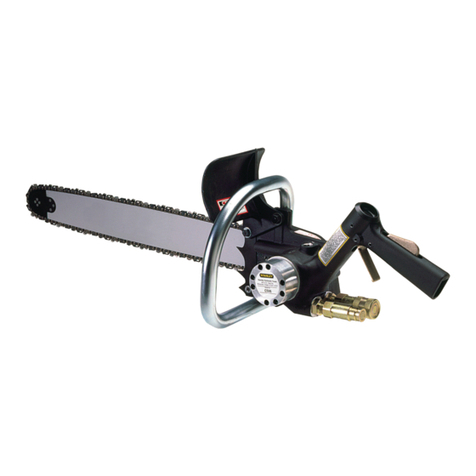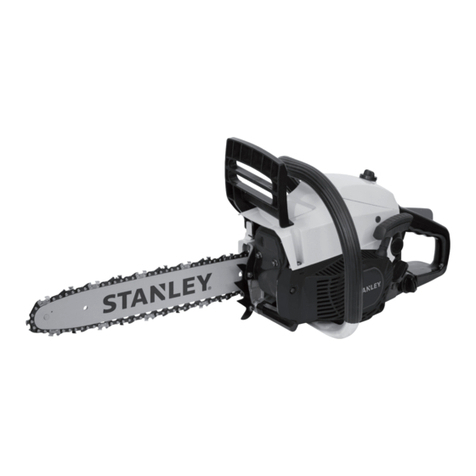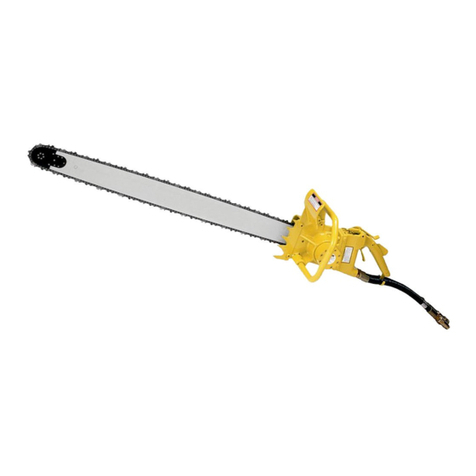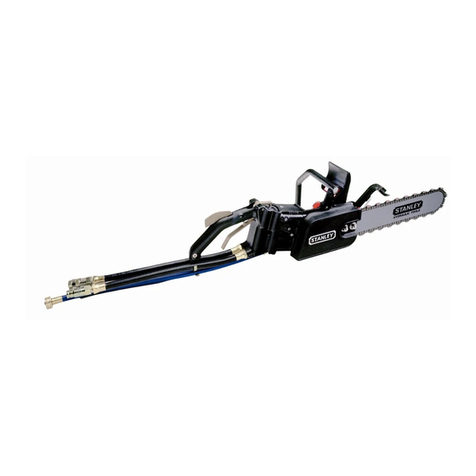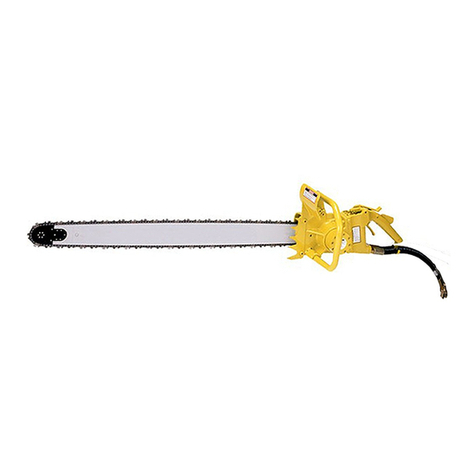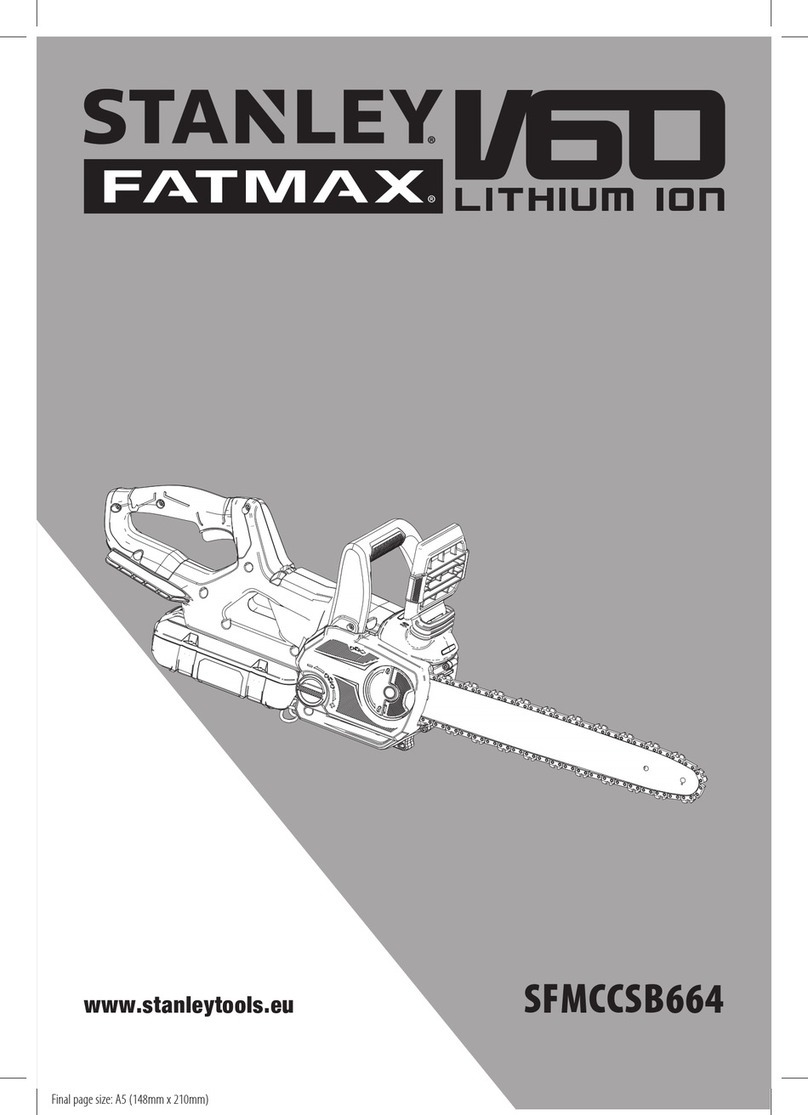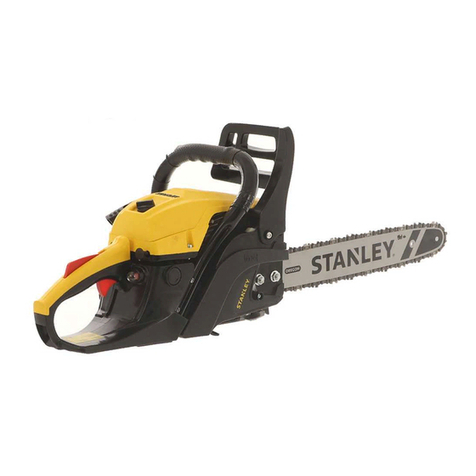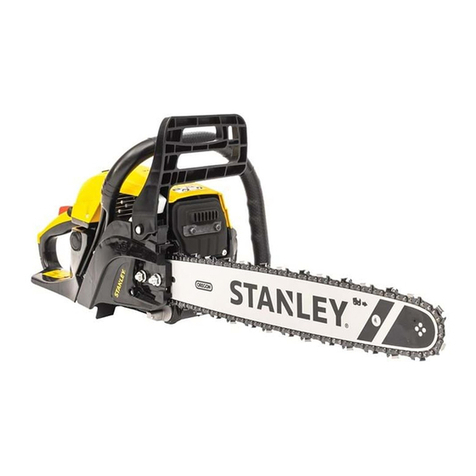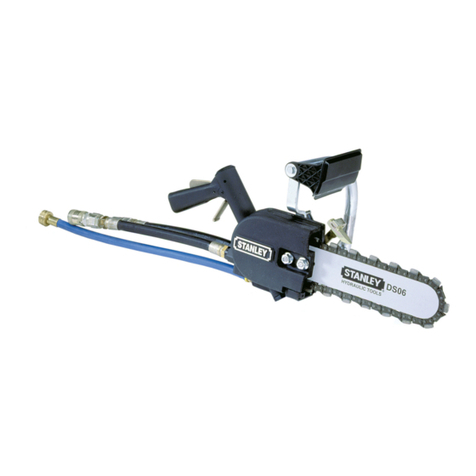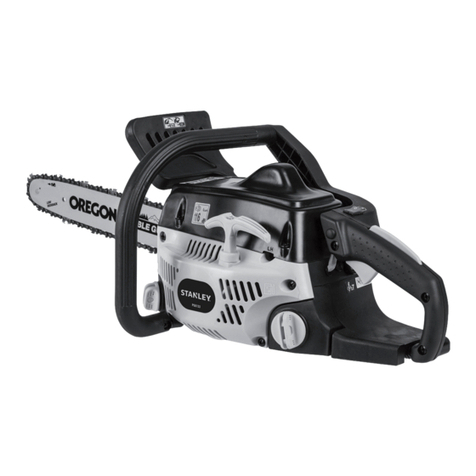
CS11 Service Manual ◄ 5
Tool operators and maintenance personnel must always
comply with the safety precautions given in this manual
and on the stickers and tags attached to the tool and
hose.
These precautions are given for your safety. Review
them carefully before operating the tool or performing
maintenance.
Supervising personnel should develop additional
precautions relating to the specic work area and local
safety regulations. Place the added precautions in the
space provided in this manual.
The CS11 Hydraulic Chain Saw will provide safe and
dependable service if operated in accordance with the
instructions given in this manual. Read and understand
this manual and any stickers and tags attached to the
tool and hose before operation. Failure to do so could
result in personal injury or equipment damage.
• Operators must start in a work area without
bystanders. Flying debris can cause serious injury.
• Do not operate the tool unless trained or under the
supervision of an instructor. Establish a training
program for all operators to ensure safe operation.
• Always wear safety equipment such as goggles, ear
and head protection, and safety shoes at all times
when operating the tool. Use gloves and aprons
when necessary.
• Operators must be familiar with all prohibited work
areas such as excessive slopes and dangerous
terrain conditions.
• Do not inspect, clean or replace parts if the hydraulic
power source is connected. Accidental engagement
of the tool can cause serious injury.
• Always connect hoses to the tool hose couplers
before energizing the hydraulic power source. Be
sure all hose connections are tight and are in good
condition.
• Do not operate the tool at oil temperatures above
140 °F/60 °C. High oil temperatures can cause high
temperature at the tool, which can result in operator
discomfort.
• Do not operate a damaged, improperly adjusted or
incompletely assembled chain saw. Be sure that the
chain stops moving when the trigger is released.
• Never wear loose clothing that can become
entangled in the working parts of the tool.
• Keep all parts of your body away from the chain saw
and maintain proper footing and balance at all times.
• Do not rely exclusively upon safety devices built into
the saw. As a chain saw user, steps must be taken to
keep your cutting jobs free from accidents or injury.
• With basic understanding of kickback, you can
reduce or eliminate the element of surprise. Sudden
surprise contributes to accidents.
• To avoid personal injury or equipment damage,
all tool repair, maintenance and service must be
performed by authorized and trained personnel.
• Keep a rm grip on the saw, with both hands, when
operating the saw. The right hand on the rear handle
and the left hand on the front handle. Use a rm grip
with thumbs and ngers encircling the chain saw
handles. A rm grip will help reduce kickback and
maintain control of the saw. Do not let go.
• Make sure the area in which you are cutting is free
of obstructions. Never allow the nose of the guide
bar to contact the log, branch or any obstruction that
can be accidently hit while operating the saw.
• WARNING: Some dust created by power sanding,
sawing, grinding, drilling, and other construction
activities contains chemicals known to the State
of California to cause cancer, birth defects or
other reproductive harm. Some examples of these
chemicals are:
• Lead from lead-based paints,
• crystalline silica from bricks and cement
and other masonry products, and
• arsenic and chromium from chemically-
treated lumber.
Your risk from these exposures varies, depending
on how often you do this type of work. To reduce
your exposure to these chemicals: work in a well
ventilated area, and work with approved safety
equipment, such as those dust masks that are
specially designed to lter out microscopic particles.
Protect yourself and those around you. Research
and understand the materials you are cutting.
Follow correct safety procedures and comply with
all applicable national, state or provisional health
and safety regulations relating to them, including,
if appropriate arranging for the safe disposal of the
materials by a qualied person.
• Never start the tool while it is lying on the ground.
• Cut at rated operating speeds (GPM).
SAFETY PRECAUTIONS


